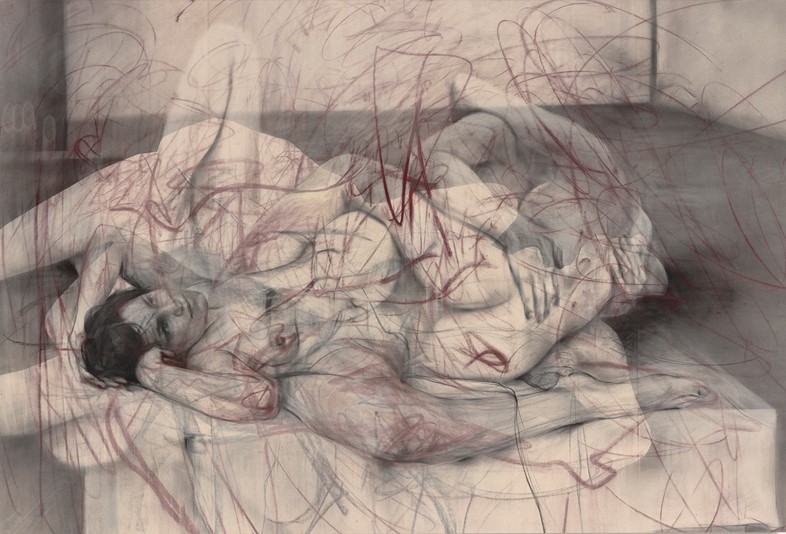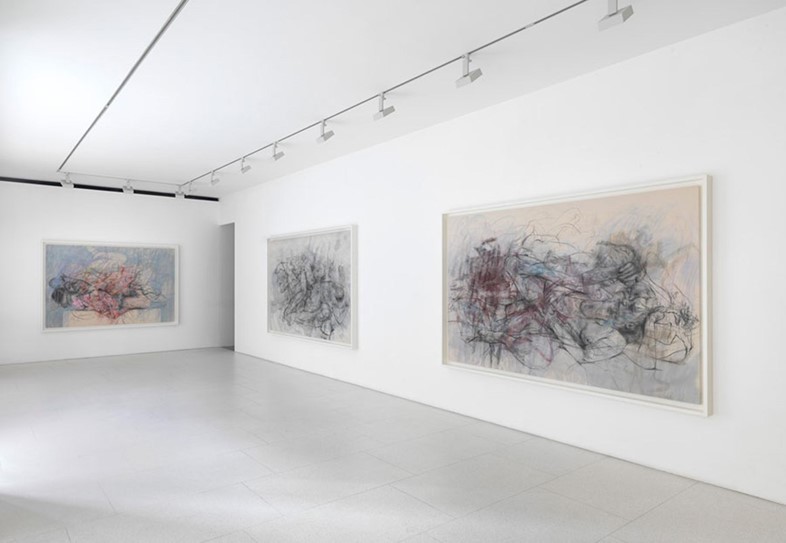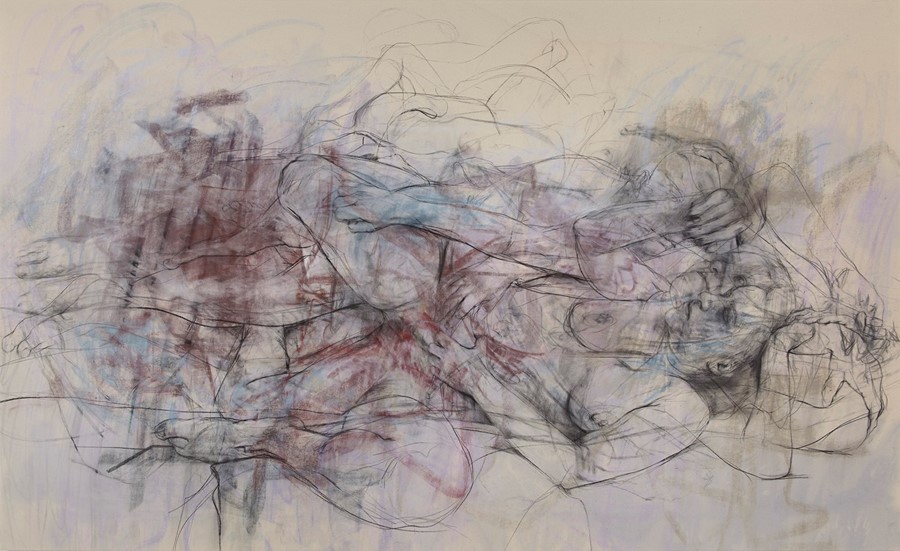In light of the British artist's compelling new exhibit, we present a comprehensive guide to her brilliant and brutal corpus
Ever since being cherry-picked by Charles Saatchi for his 1994 Young British Artists III exhibition, Jenny Saville – then, barely two years out of art school – has stayed unflinchingly faithful to her subject of choice: flesh and, most commonly, the female form. “Flesh,” she once said, citing abstract expressionist Willem de Kooning, “was the reason oil paint was invented.” Many of her nudes – bulging folds of stomach and thighs on the verge of bursting through the canvas – would convince you of this: skin, for Saville, has typically been moulded through almost melodramatic brushwork, sometimes thick and visceral, at other times silky.
It’s little surprise, then, that Saville’s corpus is often situated in line with artists from Rubens to Freud, to whom her varied treatment of media, and translation of the human form, remains indebted. That said, feminist critics have underscored Saville’s efforts to reject such a male-dominated tradition, by reclaiming the female body in all of its grotesque glory. What’s certain is that Saville has always tapped into multiple perceptions of the body, as her most recent drawings, which form her latest exhibit Erota at Gagosian London, reveal. From pornographers to Greek sculptors, no lens on the human form, however skewed, could daunt this YBA. Intrigued? Here’s our five-point guide to the fearless artist.

Admiring Art History
A game of spot the art historical reference would last a lifetime if you were surveying all of Saville’s work. But you don’t have to be a connoisseur to see that her brutal portraits nod more to Freud and Francis Bacon than to the sleek paintings of her contemporary YBAs like Gary Hume. Still, there’s grace in her work too, for which her Reproduction drawings (2009–11), paying homage to Renaissance masters can vouch. Saville’s notable rapport with art history even led her to curate a room at the Royal Academy’s exhibition last year, Rubens and His Legacy, in which she included artworks by some of her other heroes: de Kooning, Picasso and Sarah Lucas.
The Male Gaze
In her twenties, Saville painted herself on monumental canvases from all sorts of unflattering angles, on a mission to topple the male gaze. “Females”, she said at the time, “are so used to being looked at, and, as an artist, you do a lot of assessing, I wanted to play both roles.” Correspondingly, she began observing operations by a plastic surgeon, for self-portraits like Plan (1993) in which her body appeared covered in contours, pinpointing where liposuction could be performed. Meanwhile, in her series and collaboration with photographer Glen Luchford, Closed Contact (1996–97), her face is depicted squashed against glass, as if to subvert the glossy surfaces of magazine images that urged women to go under the knife.

Gender Fluidity
Forever interested in transformations of the body, Saville turned to the notion of “in-betweenness” for her deftly rendered paintings Matrix (1999) and Passage (2004). The first almost recreates Courbet’s L’Origine du monde, except the vulva on show belongs to a biological man, while in Passage, the nude portrait displays silicone breasts and a penis. “I want to be a painter of modern life, and modern bodies” Saville has said in relation to her affinity with transsexual subjects, “those that emulate contemporary life, they're what I find most interesting."
Divine Motherhood
In the late noughties, Saville’s work was re-galvanized by the experience of motherhood. Inspired notably by Leonardo’s famous Virgin and Child with Saint Anne and the Infant Baptist (c.1500), she was drawn to the age-old motif of mother and child. Her Reproduction (2009–11) series of charcoal and pastel works on paper reimagined Leonardo’s drawings in a contemporary context, with Saville’s own babies wriggling in her arms. Renaissance nativity portraits inspired a whole spectrum of Saville’s highly tactile and sensuous works, forming a significant part of her mid-career retrospective at Modern Art Oxford in 2012.
Seamless Visuality
When speaking of her current show, Erota, Saville stated, “Today we’re used to so many perspectives, our view is constantly shifting from screen to reality.” Championing this notion of seamless visuality, her most recent charcoal and pastel drawings displayed in the exhibit reveal fluctuating forms and contours of writhing, sprawling figures inspired in part by Rembrandt, Raphael and Titan sketches. As she explains, “My studio is covered with imagery from everywhere – Elgin sculptures, classical drawings, 30s porn magazines, Indian books (…)”. As always, Saville draws on multiple sources for inspiration, but this time her work appears to crystallise the concerns of so many other studies throughout her career, making the small but bold exhibition well worth a visit.
Jenny Saville: Erota is on show at Gagosian London until May 28, 2016
